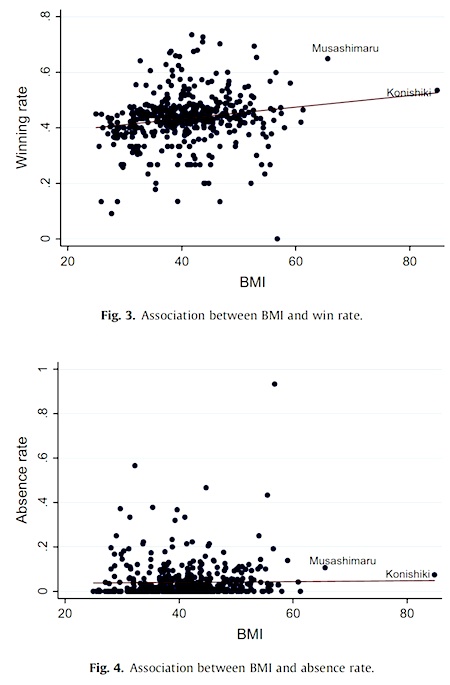This economics study suggests that allowing foreigners to work as sumo wrestlers has been detrimental to the quality of native wrestlers’ wrestling:
“Is body mass human capital in sumo? Outcome of globalization and formation of human capital in Japan,” Eiji Yamamura, Journal of the Japanese and International Economies, epub November 22, 2013. The author, at Seinan Gakuin University, Fukuoka, Japan, explains:
“Using a data set for all sumo wrestlers in the post-World War II period, this paper investigates how wrestlers’ body mass index (BMI) is associated with their win rate and absence rate. Further, the effect of BMI is compared between an early period (before the emergence of foreign wrestlers) and later period (after the emergence of foreign wrestlers). After accounting for endogenous bias using instrumental variables, the key findings are that (1) there is no positive relationship between the BMI and win rate in either the early or later period and (2) there is a positive relationship between the BMI and absence rate in the later period but not in the early period. From the findings in this paper, I make the argument that an increase in the number of immigrants with human capital different from that of domestic labor leads the domestic labor to obtain human capital that does not match its characteristics, thereby reducing its performance.”
Here’s detail from the study:

(Thanks to Hiroshi Gunji for bringing this to our attention.)
BONUS: By the same author:
“Externality of young children on parents’ watching of anime: Evidence from Japanese micro data,” Eiji Yamamura, MPRA Paper 46878, 2013. The author reports that:
“it was found that people are more likely to watch anime when they have children aged less than 12 years.”